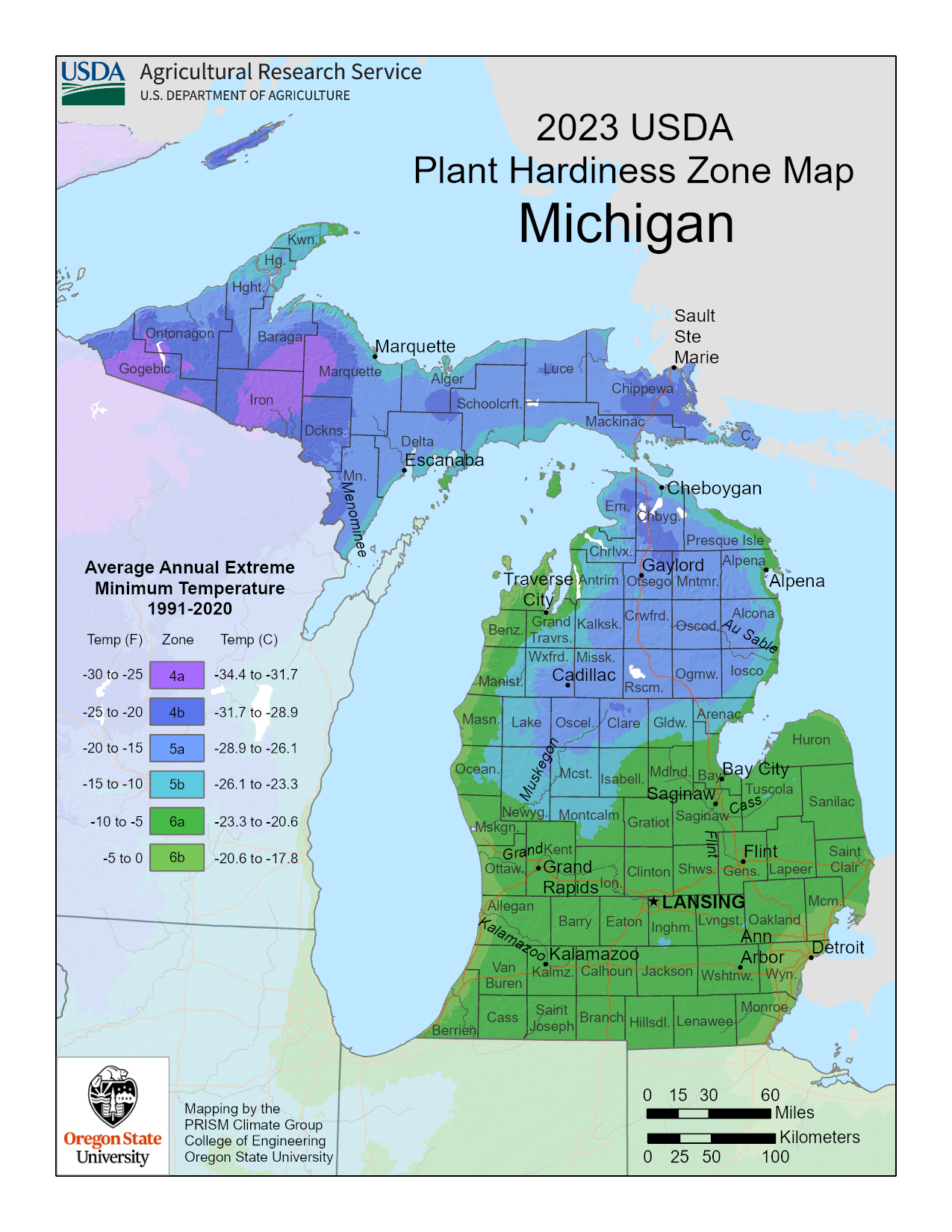Michigan Planting Zones - USDA Map Of Michigan Growing Zones

Click on the image above to see a larger version.
Information About the Michigan USDA Planting Zone Map
This Michigan planting map, devised by the USDA, divides growing zones into 5-degree F. (2.7° to 2.8°C.) increments according to average winter low temperatures over a 30-year period. A new map for 2023 was recently released which indicates warmer average winter temperatures for many areas.
This information is useful to both novice and experienced gardeners.
To locate your planting zone on the map, you can click to enlarge the map and find your general area. The Michigan plant map includes zones of cooler areas like 4a, 4b, 5a, and 5b. There are also warmer pockets in the state that include zones 6a and 6b. Understanding which growing zone you reside in is of enormous assistance when you are selecting flowers, trees, shrubs, or perennial food crops for your landscape and garden areas. Within each growing zone are microclimates, which exist because of landscape features such as hills or valleys or hardscape elements including buildings, concrete, etc.
Other factors such as the winter sun, wind, humidity, and soil nutrients play a role in the determining how hardy a particular plant will be through the winter. In general, the USDA planting zone map is an extremely useful tool, and most plant distributors and local nurseries in your area provide zone information with their plants.
Plant Outside Your Zone with Season Extenders
- Row covers are an affordable way to trap heat and protect your plants against frost and wind, making them perfect for growing in cooler zones. These highly rated Agfabric floating plant covers are a great option.
- The Ohuhu Portable Mini Greenhouse from Amazon is great for starting seedlings indoors or protecting plants outdoors in cold zones, especially for smaller spaces.
- Cold frames, like the Outsunny Raised Garden Bed Cold Frame from Amazon, are a stylish way to protect your raised beds from frost and rain while trapping in heat.
Sign up for the Gardening Know How newsletter today and receive a free copy of our e-book "How to Grow Delicious Tomatoes".